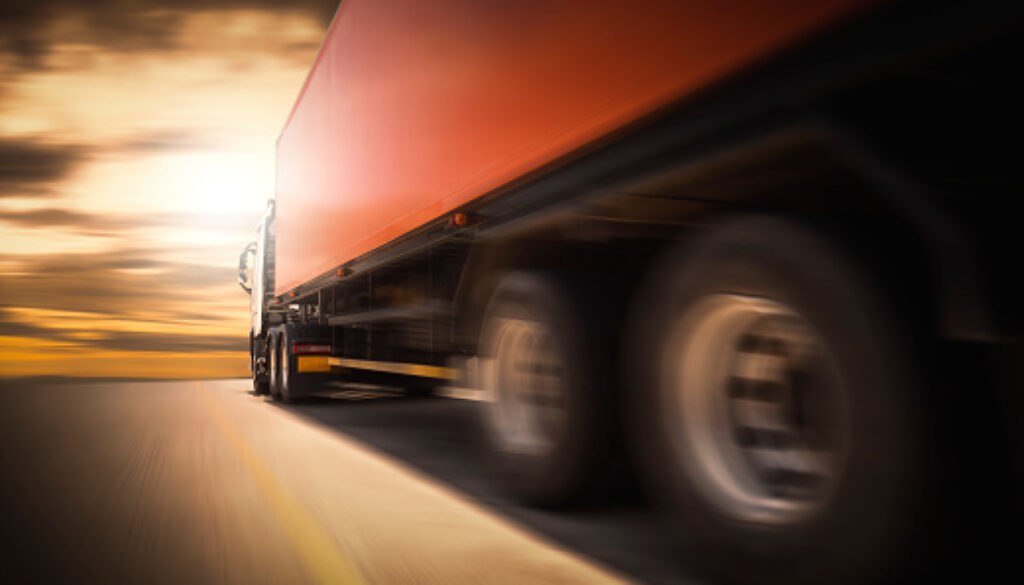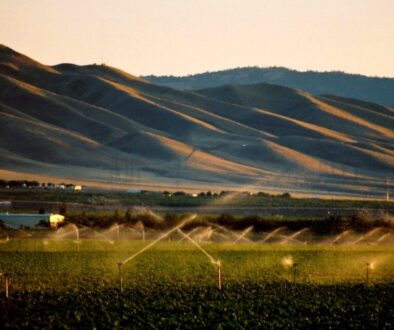Postcard from California: “No one is safe” – state banning diesel trucks
By Bill Walker
 Forty percent of all US imports of consumer goods come through the adjacent ports of Los Angeles and Long Beach. Most of the merchandise is initially trucked to one of thousands of distribution center warehouses in the Inland Empire of San Bernardino and Riverside counties, where it is sorted and packaged for delivery to American homes and stores.
Forty percent of all US imports of consumer goods come through the adjacent ports of Los Angeles and Long Beach. Most of the merchandise is initially trucked to one of thousands of distribution center warehouses in the Inland Empire of San Bernardino and Riverside counties, where it is sorted and packaged for delivery to American homes and stores.
Every day, an estimated 40,000 diesel trucks travel inland from the ports via the Interstate 710 freeway, spewing tons of dirty soot linked to lung cancer, heart attacks, asthma and other respiratory illnesses, and premature birth. The toxic toll of diesel truck emissions is why public health researchers and smog-choked residents call the I-710 corridor “the diesel death zone.”
Communities in the I-710 corridor are overwhelmingly made up of Black, Latino and lower-income populations, as are the neighborhoods around the port of Oakland, the ninth-busiest in the country, where thousands of diesels a day carry imports to an ever-growing number of warehouses in the northern San Joaquin Valley.
Port communities suffer disproportionately for America’s addiction to cheap imports. But diesel pollution “plagues every corner of the country,“ according to the nonprofit Clean Air Task Force. Nationwide, almost 70% of all freight is carried by more than 11 million diesel trucks.
Unlikely as it may seem to anyone ever stuck behind a smoke-belching big rig, for decades diesel was actually hyped as a cleaner fuel than gasoline. But 25 years ago, California state scientists identified diesel exhaust as a toxic air contaminant, based on its potential to cause cancer. After numerous other studies confirmed and strengthened the finding, in 2012 the International Agency for Research on Cancer, an arm of the World Health Organization, classified diesel exhaust as carcinogenic to humans.
Now, in a decision with far-reaching impacts for public health and shipping, last month California became the first jurisdiction in the world to order a phase-out of diesel trucks.
The California Air Resources Board (CARB) voted unanimously to require that beginning in 2036, all medium- and heavy-duty trucks sold in the state must be electric or powered by other zero-emission technologies. Large trucking companies must convert their California fleets to all-electric by 2042. Most crucially, relief is coming sooner to port communities: As of 2035, no diesel trucks will be permitted to enter or exit California ports.
CARB says the electric-truck rules will deliver $26.5 billion in public health benefits that include reductions in asthma attacks and other respiratory illnesses. The rules are projected to prevent nearly 5,000 premature deaths by 2050.
Diesel exhaust is much more hazardous to health than emissions from gasoline engines. It contains a mixture of black carbon, volatile gases including nitrogen oxides (NOx), and more than 40 known cancer-causing substances. In the air, the mix forms microscopic particles that can penetrate deep into the lungs, and the gas ozone, which together are commonly called smog. Children and the elderly are particularly vulnerable.
The new rules will affect about 1.8 million trucks, including those of the US Postal Service, FedEx, United Parcel Service and Amazon. Grants and rebates will help independent truckers make the conversion, and fleet owners are projected to save $48 billion in fuel and other operating costs by 2050.
Federal regulations allow California to set its own clean air rules, and other states often follow California’s lead. Six states – including New York and New Jersey, which together operate the nation’s third-largest port – have already adopted previous California electric-truck rules, and could also adopt the new rules. As the world’s fifth-leading economy, California’s diesel phaseout may signal the beginning of the end for diesels not just in the US but in much of the world.
“Imagine 10 years from now, when we look back to this day … we can say that California changed the world,” said CARB board member Gideon Kracov, a Los Angeles environmental attorney, after adoption of the rules at the end of a marathon two-day session.
In the meeting, CARB also ordered the nation’s first phaseout of diesel locomotives, which pollute the air around rail yards, also disproportionately located in lower-income communities of color. The rule requires that all train fleets be zero-emission by 2058 and is projected to lower cancer risk near rail yards by 90%.
The new diesel truck and locomotive rules come less than a year after CARB mandated a phaseout of gasoline-powered autos, which can no longer be sold in California after 2035. The actions should greatly accelerate the shift to electric transportation essential to meeting the state’s ambitious climate goals. Diesel trucks are 6% of vehicles in the state, but emit about one-fourth of its greenhouse gases.
The diesel rules will not only improve air quality and health around the ports and on trucking routes, but in warehouse communities at the other end of the line.
The Inland Empire counties, about an hour east of Los Angeles, are now home to almost 10,000 “fulfillment centers” totaling more than 1 billion square feet . Despite calls from activists for a moratorium on new warehouses, the building boom continues. In San Bernardino County, Amazon is building its largest warehouse – more than 4 million square feet, twice the space in the biggest skyscraper in downtown Los Angeles.
Many of the warehouses are close to homes and schools. Diesel trucks carrying goods from the ports wait for hours or days to unload at the warehouses, idling their engines and emitting pollution into surrounding neighborhoods. According to the American Lung Association, the Inland Empire has the highest levels of ozone pollution in the US.
At the CARB meeting, board members heard from almost a dozen Inland Empire residents who drove six or more hours to Sacramento to plead for adoption of the new rules. One was Adriana Gopar, who spoke in Spanish translated by an interpreter.
“Residents and workers of San Bernardino are suffering,” she said. “(The trucks and warehouses) invading our neighborhoods create tremendous hazards to the health of hundreds of thousands of human beings. No one is safe. It’s our own air that we breathe in our own homes that is killing us. Save our communities, please, by giving us the right to breathe clean air.”
Bill Walker has more than 40 years of experience as a journalist and environmental advocate. He lives in California’s San Joaquin Valley.
(Opinion columns published in The New Lede represent the views of the individual(s) authoring the columns and not necessarily the perspectives of TNL editors.)



